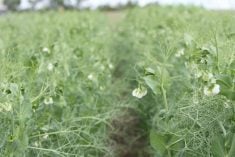Crop and stock markets have enjoyed a big rally since early March and some forecasters predict prices will continue to rise.
But others urge caution and are telling farmers it’s wise to price some new crop at values available now. They see large downside risks ahead for the major crops.
“We believe the current spurt of optimism will not last and grain values will return to reflect ‘real’ economic conditions that have not been resolved,” said Bill Gary of Commodity Information Systems in Oklahoma City.
Read Also

Activist urges new way to measure profitability
Organic activist praises Mark Carney for spearheading the Task Force on Climate-related Financial Disclosures.
“At this time we have raised our price forecasts somewhat for fall (from previous calls for $2.50 US per bushel corn and $6.50 soybeans) but still expect prices to deteriorate into the fall.”
Influential farm marketing expert Chris Hurt of Purdue University believes crop prices could rise through the year, but also feels there are many reasons to worry prices could fall.
He’s telling farmers to reduce price risk this year by locking in some production at profitable new crop prices.
“What if we double-dip on this world economy,” said Hurt about the chance of the recession deepening.
“Everybody hopes we don’t, but there’s still a lot of bad debt and that debt has not been dealt with. There are a lot of bad assets out there.”
He advises farmers to lock in prices for 25 to 35 percent of the 2009-10 soybean crop now, because November futures prices provide a marginal profit that covers cash costs plus land rent value, the farmer’s labour and machinery depreciation.
There are still reasons to hope the rally will continue in the major crops, he said. China could continue to be a major buyer of U.S. soybeans because of the drought-reduced crop in South America.
Commodity funds could continue to increase long positions in crop futures. If serious weather problems develop in the northern hemisphere, prices could rally.
But those factors may never occur, or their effect could be washed away if the recent rising economic tide ebbs.
“There’s a great deal to be determined on how this year works out, but boy it’s one where the riskiness seems to be extremely high,” said Hurt.
“Some years are years where you’ve got great opportunity, when you let your profits run. Other years are years when you want to make sure you just get through so that you can play the game again. This year is one we just want to get through.”
Hurt’s caution is in marked contrast to his optimism in late 2007 and early 2008, when he argued there was no reason soybeans could not reach up to $15 per bu. He advised farmers to scale-in soybean sales, selling some each time the price rose by a dollar.
By the time soybeans peaked above $15, most farmers following his advice would have sold their 2008-09 crop and captured most of the rally, which quickly collapsed.
He now doubts the market will regain last summer’s peaks.
“I think the odds are extremely small that we’re going back to that. Futures (right now) above $11 (on the nearby contract), these are really extraordinary prices given the factors that we have out in front of us now,” said Hurt.
“When you burst bubbles, you don’t usually just build them right back up again.”















